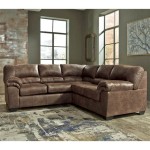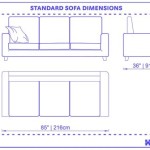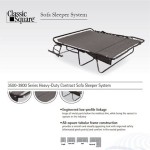How to Fix Sagging Sofa Back Cushions
Sagging sofa back cushions are a common issue that can significantly detract from both the aesthetic appeal and comfort of a living space. Over time, the fill material within these cushions compresses, loses its resilience, and results in a flattened, unsupported seating experience. Fortunately, there are several effective methods to address this problem, restoring the plumpness and support of the cushions and extending the lifespan of the sofa. The right approach depends on the type of filling material and the extent of the sagging.
Understanding the Causes of Sagging
Before initiating any repair, it is important to understand the underlying causes of sagging back cushions. The primary culprit is the degradation of the filling material over time. Common filling materials include polyester fiberfill, down feathers, foam, and combinations of these. Each material ages differently and responds to wear and tear in its own way. Polyester fiberfill tends to clump and flatten with repeated use, while down feathers can break down and lose their loft. Foam, depending on its density and quality, can compress and lose its shape. Sunlight exposure, humidity, and improper cleaning can also accelerate the degradation process.
Another contributing factor is the construction of the cushion itself. Poorly constructed cushions with inadequate internal baffling or insufficient filling material are more prone to sagging. Baffling refers to internal fabric compartments that help to distribute the filling evenly and prevent it from shifting and clumping. Cushions lacking baffles often experience a concentration of filling at the bottom, leaving the upper portion unsupported and susceptible to sagging. Furthermore, the type of fabric used for the cushion cover can influence its ability to maintain its shape and support the filling.
Finally, usage patterns play a significant role. Sofas that are frequently used and subjected to heavy weight are more likely to experience sagging cushions. Areas that are consistently used more than others will exhibit faster deterioration. Regular rotation and fluffing of the cushions can help to mitigate this effect by distributing wear more evenly.
Methods for Restoring Sagging Cushions
Several methods can be employed to restore sagging sofa back cushions. The most appropriate technique depends on the type of filling material and the severity of the sagging. These methods generally involve either adding more filling material, redistributing the existing fill, or replacing the fill entirely.
Adding More Filling: This is a common and relatively simple solution for cushions that have lost their plumpness. The process involves unzipping the cushion cover and adding new filling material to supplement the existing fill. The type of filling added should ideally match or complement the existing fill. For example, if the cushion is filled with polyester fiberfill, adding more polyester fiberfill is the most straightforward approach. However, it is also possible to mix different types of filling to achieve a desired level of firmness and support. For instance, adding a small amount of shredded foam to polyester fiberfill can provide additional structure and prevent the filling from clumping as easily.
When adding filling, it is crucial to avoid overfilling the cushion, as this can make it too firm and uncomfortable. Gradually add small amounts of filling and test the cushion's firmness until the desired level is achieved. Distribute the filling evenly throughout the cushion, paying particular attention to areas that are noticeably sagging. It can be helpful to use a long, thin object, such as a knitting needle or ruler, to push the filling into corners and ensure even distribution.
Redistributing the Existing Fill: In some cases, sagging cushions can be improved by simply redistributing the existing filling. This method is particularly effective for cushions that have developed uneven filling distribution, such as those with a concentration of fill at the bottom. The process involves removing the cushion cover and manually fluffing and separating the filling. This helps to break up clumps and redistribute the fill more evenly throughout the cushion.
After fluffing the filling, carefully redistribute it within the cushion cover, ensuring that all areas are adequately supported. Pay close attention to the top portion of the cushion, which is often the most prone to sagging. If the cushion has internal baffling, ensure that the filling is evenly distributed within each compartment. Zipping the cushion cover while the filling is properly distributed will help maintain the shape. This method might be a temporary solution, but it's a useful starting point.
Replacing the Filling Entirely: For severely sagging cushions, replacing the filling entirely may be the most effective solution. This is particularly true for cushions with degraded or compressed filling that cannot be adequately restored by adding more fill or redistributing the existing fill. The process involves removing the old filling, cleaning the cushion cover, and replacing it with new filling material. This allows for complete customization of the cushion's firmness and support.
When selecting new filling material, consider the desired level of firmness and support, as well as the durability and cost of the different options. High-density foam is a popular choice for its firmness and longevity, while down feathers offer a luxurious feel and excellent loft. Polyester fiberfill is a more affordable option that provides adequate support for most cushions. A combination of different filling materials can also be used to achieve a custom feel. Ensure that enough filling material is purchased to fill the cushion completely without overstuffing it.
Maintenance and Prevention Strategies
Once the sagging cushions have been restored, it is important to implement maintenance and prevention strategies to prolong their lifespan and prevent future sagging. Regular fluffing and rotation are essential for maintaining the plumpness and support of the cushions. Fluffing helps to break up clumps and redistribute the filling, while rotation ensures that all areas of the cushion are subjected to equal wear and tear. Cushions should be fluffed and rotated at least once a week, or more frequently if they are heavily used.
Proper cleaning is also crucial for maintaining the condition of the cushions. Follow the manufacturer's instructions for cleaning the cushion covers, and avoid using harsh chemicals or excessive heat, which can damage the fabric and filling. Spot clean any spills or stains immediately to prevent them from setting and causing permanent damage. For cushions that are not easily washable, professional cleaning may be necessary.
Protecting the cushions from sunlight and humidity can also help to prevent premature degradation. Sunlight can fade the fabric and break down the filling material, while humidity can promote mold and mildew growth. Position the sofa away from direct sunlight, and use curtains or blinds to reduce the amount of light exposure. Ensure adequate ventilation in the room to prevent the buildup of humidity. Consider using fabric protectors to shield the cushions from stains and moisture.
Furthermore, consider the weight distribution on the sofa. Encourage even seating across all cushions to prevent localized wear and tear. Avoid consistently sitting on the same cushion or a specific area of a cushion. This will help maintain an even distribution of the filling material and prevent premature sagging in localized areas. It might seem trivial, but habitual behavior significantly impacts the longevity of the cushions.
Finally, investing in high-quality cushions with durable filling material and robust construction can significantly reduce the likelihood of sagging. While these cushions may be more expensive upfront, they will ultimately provide better support and last longer than cheaper alternatives. Look for cushions with internal baffling, high-density foam, or a combination of different filling materials for optimal durability and performance. Choosing cushions designed for heavy use will prove beneficial in the long run.
By employing these restoration techniques and preventative measures, it is possible to maintain the comfort and appearance of a sofa and extend the lifespan of its back cushions. Regular maintenance, careful cleaning, and mindful use will ensure that the sofa remains a comfortable and inviting piece of furniture for years to come.

How To Fix Sagging Couch Cushions Thistlewood Farm

How To Fix Saggy Couch Cushions An Exercise In Frugality

Tip How To Easily Fix Saggy Couch Cushions Instrupix

How To Fix Sagging Couch Cushions Thistlewood Farm

Easy Inexpensive Saggy Couch Solutions Diy Makeover Love Of Family Home

How To Stuff Saggy Couch Cushions Under 50 Thetarnishedjewelblog

Diy Sagging Couch Cushion Itsabradenfullife Home Improvements Yn S Blooming Creations

4 Ways To Fix Sagging Sofa Cushions Wikihow

Easy Inexpensive Saggy Couch Solutions Diy Makeover Love Of Family Home

30 Solutions To Expensive Problems Diy Couch Cushions








